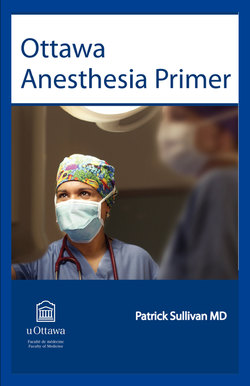Читать книгу Ottawa Anesthesia Primer - Patrick Sullivan - Страница 22
На сайте Литреса книга снята с продажи.
The Endocrine System:
ОглавлениеPatients with diabetes mellitus are prone to a number of vascular complications associated with elevated levels of blood glucose.26 In particular, chronic hyperglycemia increases the risk of developing coronary artery disease (CAD), myocardial ischemia and infarction (MI), hypertension, neuropathy, and chronic renal failure.
Throughout the perioperative period, the stress of surgery and preoperative fasting can result in marked swings in blood glucose, volume depletion, thrombogenesis, arrhythmias, and silent MIs. Perioperative hyperglycemia also impairs wound healing, and increases the risk of infection. It is important to ask patients about their glucose control, and inquire about their usual blood glucose level and compliance with therapy (diet/oral hypoglycemic agents/insulin/combination therapy). The presence of co-morbidities should be verified, including cardiac ischemia, neuropathy, and nephropathy. If patients are on insulin, it is important to ensure they have followed the preoperative fasting instructions and insulin orders. Typically, patients are instructed to take half of their morning dose of insulin and omit any oral hypoglycemic agents on the day of surgery. At the time of admission to hospital, a glucometer measurement is obtained and an intravenous infusion containing glucose (e.g., 5% dextrose in water [D5W] at 100 mL∙hr-1) is initiated. Continued management is typically achieved using a “sliding scale” basing additional insulin administration on the results of glucometer measurements repeated at regular intervals. Alternatively, tighter control of blood glucose levels may be desired in the perioperative period. This is generally achieved using a glucose - insulin intravenous infusion protocol.
Patients with thyroid disease may experience difficulties under anesthesia.27 Profound hypothyroidism is associated with myocardial depression and exaggerated responses to sedative medications. Hyperthyroid patients are at risk for perioperative thyroid storm. Thyroid goiters may either directly compress the airway or involve the recurrent laryngeal nerve, leading to vocal cord palsy and placing the patient at risk for airway obstruction.
Patients with pheochromocytoma can be particularly challenging for the anesthesiologist, surgeon, and internist involved in their care. These patients are at risk for extreme swings in blood pressure and heart rate throughout the perioperative period. They also require intensive preoperative therapy with adrenergic blocking drugs prior to surgery.28
Adrenal corticosteroid production increases postoperatively in response to the stress of surgery. Chronic intake of oral steroids may suppress production of adrenal corticosteroids. Patients who are on corticosteroid therapy are at risk of developing postoperative adrenal insufficiency due to their inability to increase endogenous corticosteroid production to match the imposed stress of surgery. The incidence of adrenal suppression is not predictable and depends on the potency and frequency of steroid use as well as the length of steroid therapy.29 Patients who have received a dose of prednisone > 20 mg per day for more than 5 days in the past 12 months may be at an increased risk of developing postoperative adrenal insufficiency. Supplementation with parenteral corticosteroids may be required to prevent adrenal insufficiency in the perioperative period.
